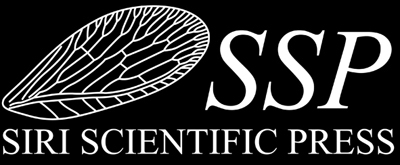Progressive Palaeontology 2016 Prize Winner
Posted by David Penney on
We would like to congratulate Lukáš Laibl of the Czech Republic for winning one of our book tokens as first prize for best poster at the recent Progressive Palaeontology 2016 Conference held in Oxford.

Morphological variability of Sao hirsuta (Trilobita, Cambrian) and the case for neutral evolution
Lukas Laibl1*, Jorge Esteve2 and Oldrich Fatka3
1National Museum Prague, Department of Palaeontology, Václavské námrstí 68, 115 79 Prague 1, Czech Republic; 2Complutense University of Madrid, Avda. de Séneca 2, Ciudad Universitaria, 280 40 Madrid, Spain; 3Charles University, Faculty of Science, Institute of Geology and Palaeontology, Albertov 6, 128 43, Prague 2, Czech Republic.
The solenopleurid trilobite Sao hirsuta is known form the Cambrian Series 3 of the SkryjeTýrovice Basin (Czech Republic), the Ossa-Morena Zone (Spain) and the Franconian Forest (Germany). Late meraspid and holaspid morphology of S. hirsuta is characterised by hollow spines, densely covering most parts of the dorsal exoskeleton. A detailed morphological study comparing the specimens from the Skryje-Týrovice Basin and the Ossa-Morena Zone revealed significant differences in spine density and spine sizes between these two populations. While the population from Bohemia shows comparatively dense and thin spines on their cranidia, the population from Spain displays rather sparse and thicker spines. Both populations are of a slightly different age but other factors suggest that the environment in these areas was comparable. We therefore propose the observed variability to be a result of environmentally unconstrained neutral evolution. The previous study on the ontogeny of S. hirsuta indicated that its early postembryonic stages were benthic and that Sao was a poor disperser. This is in agreement with the isolated distribution of S. hirsuta along the West Gondwanan margin. The poor dispersion of Sao could have led to a genetic separation of individual populations and a subsequent morphological differentiation, regardless to environment. This work was financially supported by Ministry of Culture of the Czech Republic (DKRVO 2016/06, National Museum, 00023272).
Lukas has a BSc (Bc. in Czech equivalent) in Geology (Charles University in Prague, 2010), a MSc (Mgr. in Czech equivalent) in Geology (Charles University in Prague, 2012) and is currently in his final year of studying for a PhD.
Some of his other publications include:
Laibl, L., Fatka, O., Budil, P., Ahlberg, P., Szabad, M., Vokáč, V. & Kozák, V. 2015. The ontogeny of Ellipsocephalus (Trilobita) and systematic position of Ellipsocephalidae. Alcheringa 39, 477–487.
Crônier, C., Budil, P., Fatka, O. & Laibl, L. 2015. Intraspecifc bimodal variability in eye lenses of two Devonian trilobites. Paleobiology 41, 554–569.
Fatka, O., Budil, P., Cronier, C., Cuvelier, J., Laibl, L., Oudoire, T., Polechová, M. & Fatková, L. 2015. Cambrian fossils from the Barrandian area (Czech Republic) stored in the Musée d'Histoire Naturelle de Lille. Carnets de Géologie 15, 89–101.
Laibl, L., Fatka, O. & Budil, P. 2015. Unusual Cambrian trilobite larva from the Skryje–Týřovice Basin, Czech Republic. Palaeoworld 24, 71–74.
Laibl, L., Fatka O., Crônier C. & Budil P. 2014. Early ontogeny of the Cambrian trilobite Sao hirsuta from the Skryje-Týřovice Basin, Barrandian area, Czech Republic. Bulletin of Geosciences 89, 293–309.
Budil P., Crônier C., Manda Š., Fatka O., Laibl, L. & Bignon A. 2013. Juvenile phacopid trilobites from the Prague Basin (Czech Republic). Paläontologische Zeitschrift 87, 219–234.
Share this post
- 0 comment
- Tags: Conference, News, Prize winners, Sponsorship
0 comment
